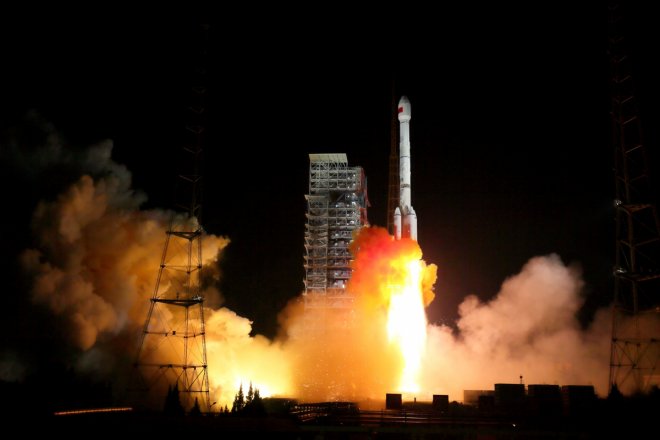
China launched 2 BeiDou-3 satellites for global navigation and positioning in its Long March-3B rocket on Nov. 5, at 7:45 pm (China Standard Time) from the Xichang Satellite Launch Center in the southwestern province of Sichuan.
According to Xinhua, the satellite launch was a part of the BeiDou Navigation Satellite System which was launched in 1994.
Named after the Chinese term for the plough or the Big Dipper Constellation, the satellite system had started its functioning in 2000 for serving navigation purpose and positioning in China. It later stretched its functional area to the Asia-Pacific region by the end of 2012.
China's BeiDou mission plans to give a global extension to its navigation system by 2020 with 30 functional satellites. China might become the third country to have a global navigation network, after the USA and the Russia, on completion of this project.
The country plans to launch 18 BeiDou-3 satellites by the end of 2018 to expand the navigation service to countries across the Belt and Road initiative.
Meanwhile, five more similar navigation satellite systems are guiding people around the world. The United States Global Positioning System (GPS) takes the lead in this category for providing navigation and positioning around the globe. Russia's Glonass is another major satellite-based navigation and positioning system.
The European Union has developed the Galileo system for their regional navigation purpose. Meanwhile, India and Japan have developed their own regional satellite systems: Indian Regional Navigation Satellite System (IRNSS) and Quasi-Zenith Satellite System (QZSS).
The navigation satellites account for a huge proportion of the satellites which orbits the earth.
Japan had launched its latest navigation satellite QZSS-4 into its orbit on Oct. 9 in its H-2A rocket. Meanwhile, India's mission to launch its IRNSS- 1H satellite, the eighth satellite in the Indian Regional Navigation Satellite System on August 31, 2017, failed due to the failure of its Polar Satellite Launch Vehicle (PSLV-C39).
The PSLV was one of the world's most popular launch rocket, which has completed 92 space mission. It has sent satellites of the Indian space agency ISRO as well as 28 other countries into the orbitals.









